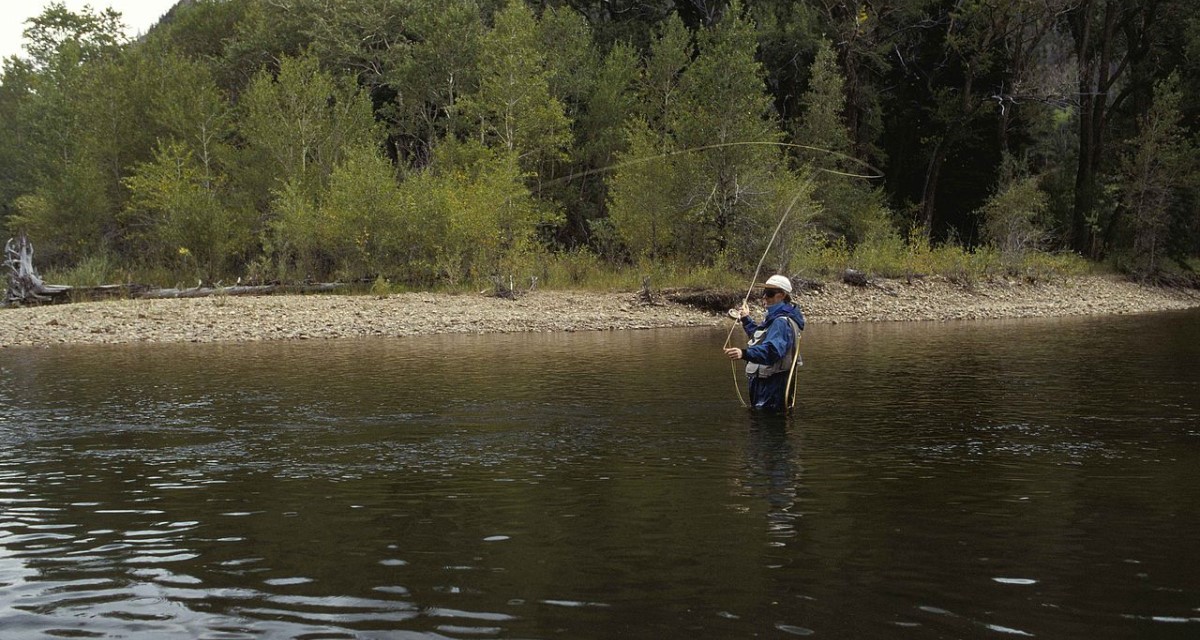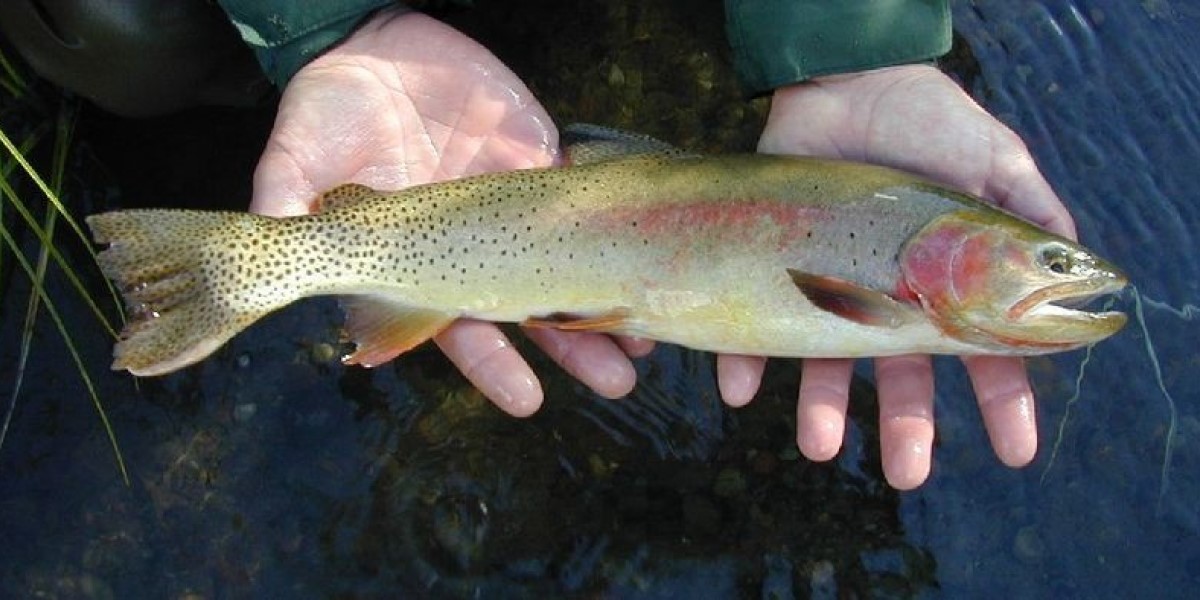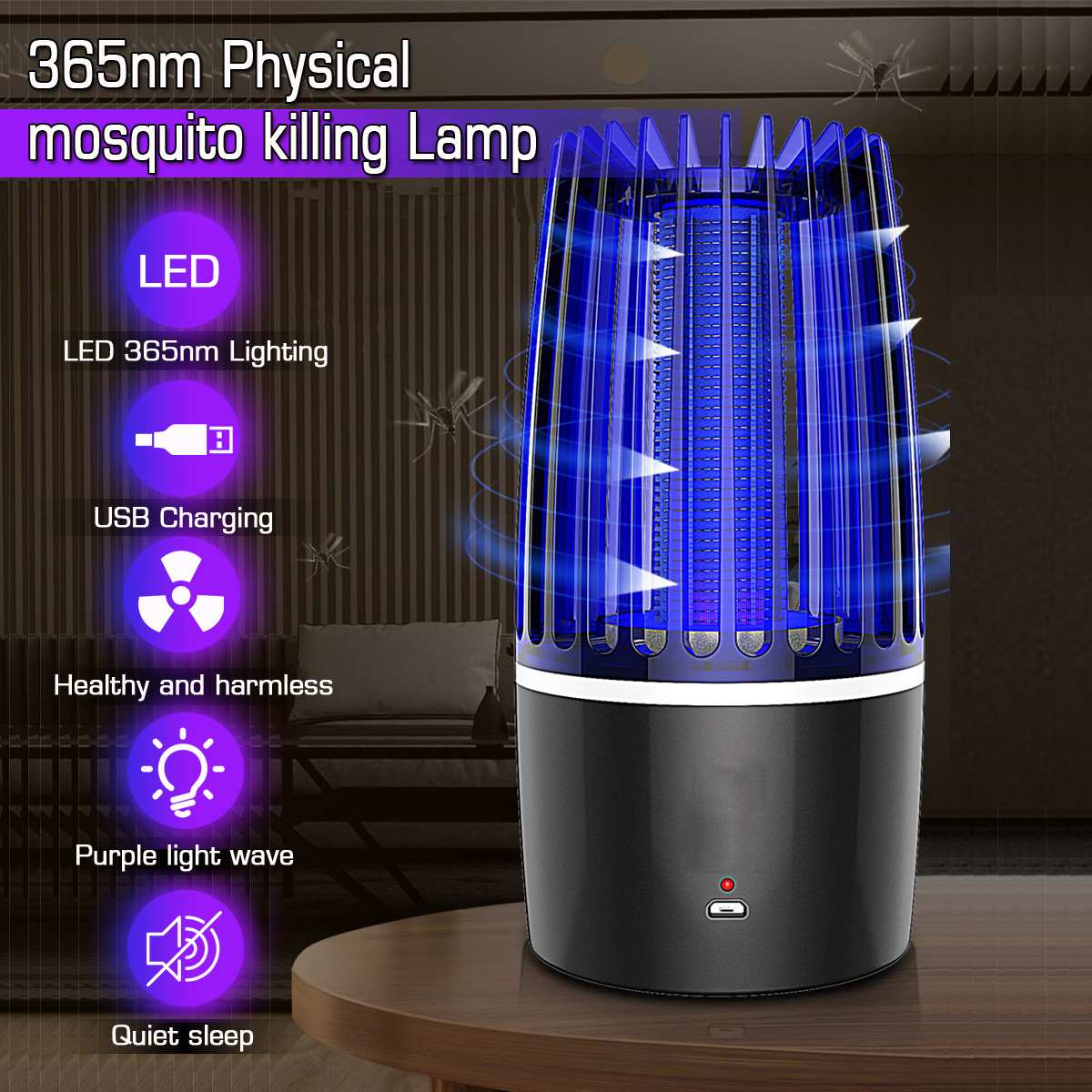This post contains affiliate links and as an Amazon Associate, Alpha and Omega Outdoors may earn from qualifying purchases.
Pound for pound, there’s no fish in freshwater that can outfight a smallmouth bass. They strike like bronze torpedoes and fight with gravity-defying abandon, leaving anglers awestruck and—in many cases—heartbroken. Big smallies often swim away leaving bent hooks and broken lines in their wake. Many fly fishermen end up tangling with smallmouths by accident while fishing for trout. For some, a chance encounter with a feisty bronzeback turns into a lifetime pursuit. Once you’ve landed a 5-pound smallmouth on a fly outfit, it’s hard to look back. Fly fishing for smallmouth bass is thrilling, and in most cases, not all that complicated. With a few simple techniques and some basic knowledge of bass behavior, you arrive at any stream ready to catch your limit of smallmouth bass.
Fly Fishing for Smallmouth Bass – Location and Timing
Smallmouth bass are most common in the northeastern United States and southeastern Canada. Their native range extends as far south as Tennessee and as far west as the Dakotas, but they’ve been introduced far outside their original territory. You can fly fish for smallmouths in California, Oregon—even parts of Texas.
Smallmouth bass like warm water, at least compared to trout (compared to largemouth bass, smallmouths actually like it a bit cooler). Their optimum temperature range is between 65° and 75°F, though they’re adaptable well beyond that range. They prefer rocky habitats where their bronze color pattern allows them to blend in perfectly and ambush their prey.
Fly Fishing for Smallmouth Bass – Lakes and Ponds
Fly fishing for smallmouth bass is a bit more challenging in lakes and ponds than in moving water, because anglers’ options are more limited. Smallmouths in still water often inhabit depths that make fly fishing difficult. That being said, there are still great opportunities to catch smallmouth on flies, especially in the morning and evening.
Smallmouth bass are most likely to hunt in shallow water during the low-light conditions of morning and evening. They’re also more likely to strike a lure or fly on the surface during these hours. Look for them near boulder-strewn shores, above a rocky drop-off, and around reefs and rock piles.
Fly Fishing for Smallmouth Bass – Rivers and Streams
Smallmouth bass thrive in moving water, especially in swift, clear rivers and streams that offer an abundance or rocky cover. They’re less common in slow, sluggish rivers and backwater areas. They excel in fast-moving rivers, but they somewhat paradoxically seek out slack water when they can find it.
You’ll find smallmouths along a deep riverbend where the current is less strong, or in the current break formed by large boulders or bridge abutments. Two of the best places to find stream smallies are the lower end of a pool, where they can hunt for crawfish and other aquatic critters, and the upper end of a pool, where they often wait for the current to sweep a meal right into their mouths.
Fly Fishing Tips and Techniques for Smallmouths
One of the best overall pieces of advice when it comes to fly fishing smallmouths is this: keep it simple. A handful of flies and a few basic techniques will catch smallmouths in most situations, and classic fly patterns almost always do the job.
Smallmouth bass aren’t as picky as trout are. You can trigger smallmouth bass to bite by a lifelike silhouette that moves like a real minnow, crawfish or insect. They’re less likely to fixate on details, and while it’s always a good idea to cast a fly that more-or-less resembles smallmouths’ natural prey, you don’t have to match the hatch with obsessive attention to detail.
Minnow Imitating Flies
Streamers and weighted flies that mimic baitfish and minnows are often the most effective flies for smallmouth bass. The Clouser Minnow is a tried-and-true fly that deserves a place in any bass angler’s fly box, and some of the most effective patterns include yellow, chartreuse and white.
Minnow imitations excel in current, and are great for fishing in pools and riffles. It’s often best to slow down your retrieve compared to trout fishing. Instead of repeatedly stripping the line six inches at a time, try a long pause following each short strip.
Smallmouths love to strike a minnow as it falls, and most strikes come while you’re not moving the fly at all. You can even dead drift streamers in the current. Of course, sometimes an erratic retrieve that mimics a panicked baitfish will trigger a reaction strike.
Topwater Popper Action
There are times when nothing tempts bass quite like a topwater popper fly. Poppers can replicate anything from a frog to a struggling insect or minnow on the water’s surface, and they are equally effective in lakes and ponds as they are in moderate to slow current.
The Sneaky Pete is one of the great smallmouth poppers, and Bett’s Bass Bug is a classic bass fly. Poppers often provoke visciuous surface strikes, but there are also times when bass will gently inhale them with a barely-noticeable ripple.
It’s also important to carefully watch your bait and not set the hook until you know it’s been taken. Smallmouths have a habit of nipping at a popper’s heels before they fully commit to it, so you may see a boil at the water’s surface just behind your fly before you feel the real strike.
Smallmouths on Dry Flies
Poppers aside, a wide variety of dry flies can tempt bites from hungry smallmouths. As a general rule, smallmouth bass strike larger dry flies than trout do, but a wide range of patterns can be effective. Grasshopper patterns like Dave’s Hopper Fly are some of the best.
Any time you’re fishing for smallmouths in summer, on a stream or pond with tall grass nearby, it’s wise to have a grasshopper pattern or two handy. And remember, it’s impossible to move your fly too slowly.
If the current is slow enough to allow it, wait until the ripples subside before moving your fly at all, and then give it just a subtle twitch. Think of the way a real insect moves when it has accidentally fallen into the water. It should appear to be struggling in place, not zipping across the surface.
Nymphing for Smallmouths
Nymphing is a technique many western trout anglers use to imitate aquatic insects in their larval form. It typically involves dead drifting nymphs—a type of wet fly—with a strike indicator so that bites can be detected visually.
Smallmouths in rivers and streams grow up eating nymphs of all kinds, including hellgrammites, dragonfly and damselfly larvae, mayfly nymphs and others. So this technique translates well to bass fishing.
Nymphing takes a bit of practice (and there are a few variations of it) but at its most basic it involves casting up and across the stream, and allowing the nymph to drift downstream with the current, ideally as close to the bottom as possible. Copper John patterns are classic nymph flies that mimic mayfly and stonefly nymphs, which are common in many smallmouth streams.
Choosing a Fly Rod for Smallmouth Bass
Smallmouth flies tend to be on the heavier side, and as a result the best fly rods for smallmouths are often just a bit heavier than trout rods. With that in mind, if you already own a good quality trout rod, you don’t necessarily have to start from scratch to build a quality smallmouth outfit. I personally tend to favor a 5 to 6 weight rod for trout, and a 6 to 7 weight rod for smallmouths, so there’s certainly some overlap there.
I’m a big fan of the Temple Fork Outfitters Signature II Series Fly Rod for smallmouths. The 9’ 6wt model is perfect, with a medium-fast action tip and the ability to load deeply into the midsection when battling a big fish. It also isn’t terribly expensive, making it a good choice for novice and experienced fly anglers alike. The Waterworks-Lamson Liquid Fly Reel is a good entry-level fly reel to pair it with.
Smallmouth Line and Leaders
Floating lines are best for most bass fly fishing situations, and I tend not to get too obsessed about brands when it comes to line for bass fishing (Orvis and Scientific Angler both make some great fly lines for bass fishing). RIO Products Smallmouth Bass Line is the only fly line I know of that’s specifically designed for smallmouth bass fishing, and it’s a great choice. It has the right weight distribution and a powerful front taper for casting chunky bass flies.
As for leaders, monofilament works best for dry flies and poppers on the surface, while a denser fluorocarbon line is better suited to nymphing and other sub-surface techniques. A 9-foot leader in either 8-pound monofilament or 12-pound fluorocarbon will have you covered in just about any situation.
Last Word on Fly Fishing for Smallmouth Bass
The bottom line is this: fly fishing for smallmouths is fun, so don’t overthink it. If you own a reasonably good fly rod and a handful of flies, there’s a very good chance you can catch smallmouths on your local river or stream.
If not, you can get all the gear, tackle and flies you need without breaking the bank. I would even go so far as to say that if you’re new to fly fishing, targeting smallmouths is a great way to start. I can think of no more enjoyable way to spend a warm spring day or a summer evening.
Featured Photo by Michal Dziekonski on Unsplash





